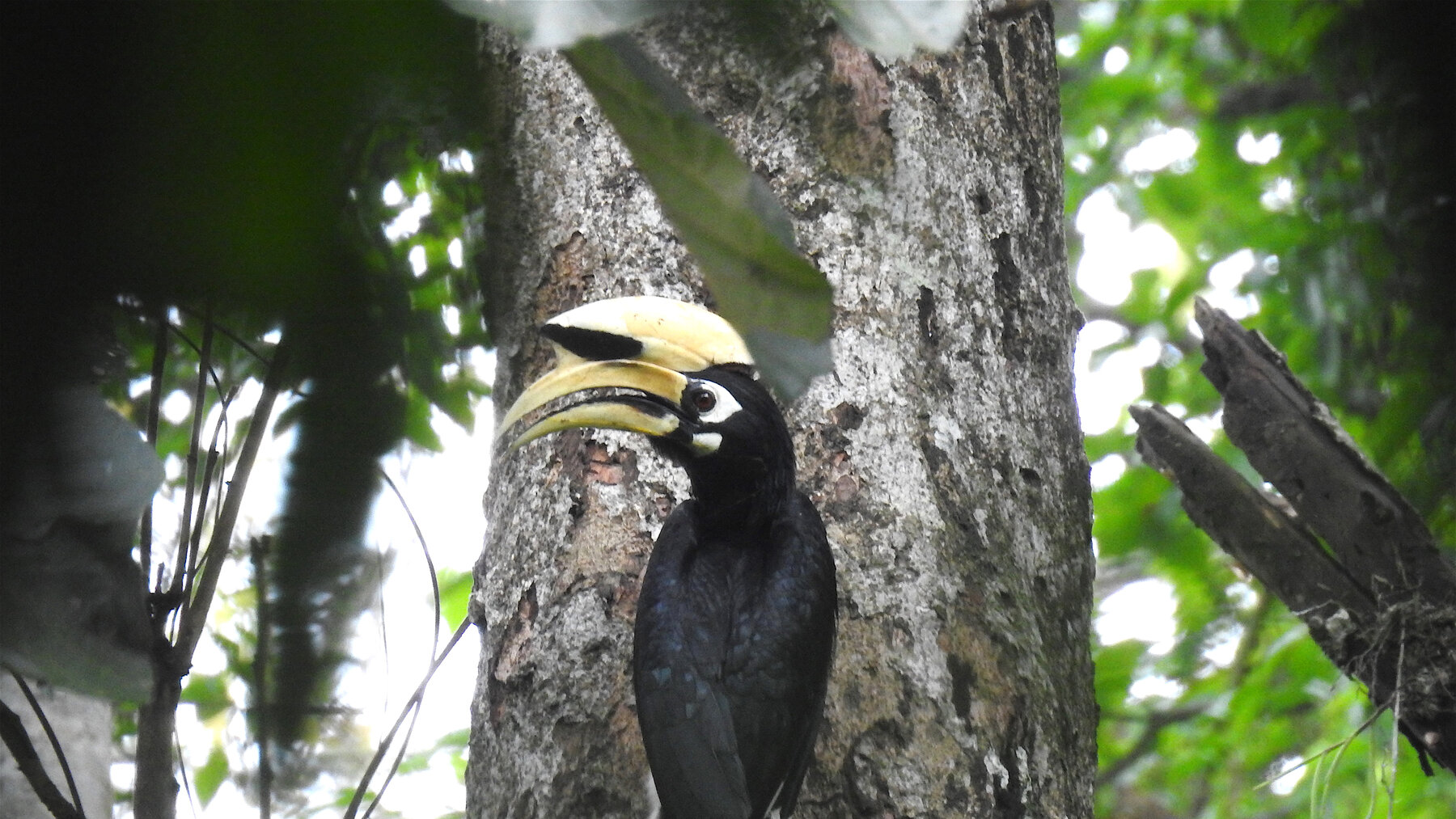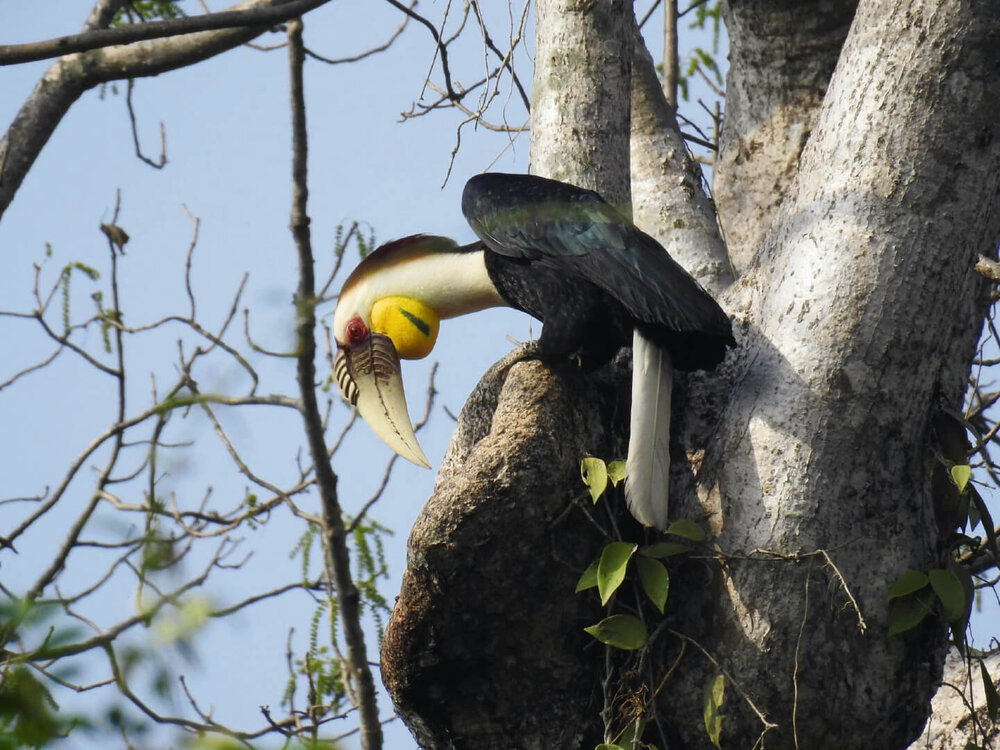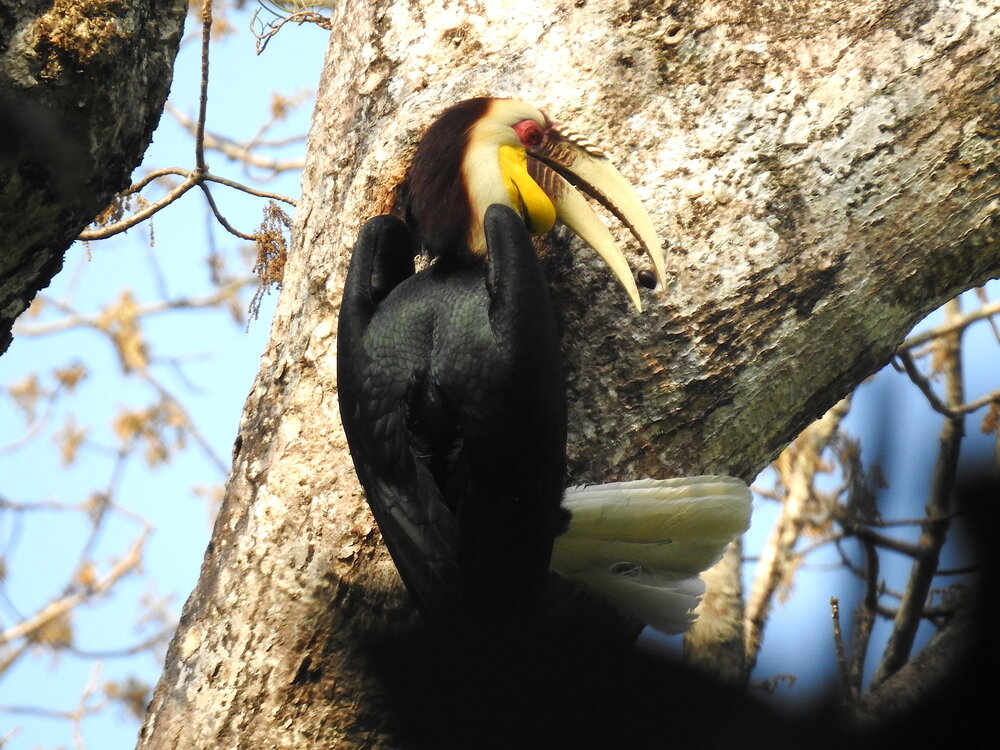
Hornbill
Zoo Berlin protected hornbill nests in India.
Project facts
- Project name
Pakke Wildlife Sanctuary
- Species
Various hornbills (Bucerotidae)
- IUCN threatened status
Various
- Project location
Arunachal Pradesh, India
- Greatest threat
Habitat loss, hunting
- Response
Deploying guards to protect nests
The bird with a horn
Hornbills are a family of birds characterised by a very long, thick, down-curved bill that resembles a horn. There are around 50 species of hornbill, most of which also have a spongy, horn-like growth on top of their beak called a casque. Hornbills are found in Africa, Southeast Asia and India. Several species of hornbill can also be found at Zoo Berlin.
Biodiversity at the foot of the Himalayas
The Pakke Wildlife Sanctuary is situated in the northeastern Indian state of Arunachal Pradesh, at the foot of the Himalayas.This national park is considered one of the best-protected nature reserves on the whole of the Indian subcontinent. It is situated in a biodiversity hotspot in the Eastern Himalayas and has elevations ranging from 100 to 2,000 metres above sea level. Pakke is home to more than 2,000 species of plant and 400 animal species, many of which are threatened. These threatened species include mammals like tigers, leopards, bears and elephants, but the 860 km² park is also home to an impressive array of bird life. Four species of hornbill live here: the great hornbill (Buceros bicornis), the wreathed hornbill (Rhyticeros undulatus), the rufous-necked hornbill (Aceros nipalensis), and the Oriental pied hornbill (Anthracoceros albirostris).
The human threat
However, even in this protected area, hornbills are threatened by loss of habitat. The growing human population and the associated rise in demand for agricultural land has led to forest clearance throughout India and Southeast Asia, posing a great threat to biodiversity in these regions. The second major threat facing hornbills is hunting. These extraordinary birds are hunted not only as food, but also as trophies.
Cracking down on hunting
The Pakke Wildlife Sanctuary has made it its mission to protect the nests of these endangered hornbills. The forestry authorities are working with the local population and organisations such as Hornbill Watch to monitor the hornbills. Anyone found hunting hornbills or destroying their nests by cutting down trees during the breeding season is subject to a penalty. It is illegal to kill male hornbills, too, as if a father bird dies, so do the mother and chicks dependent on him. A well-conceived conservation project to monitor and protect the hornbills has been running in the region since 2003.
Adopt-a-nest scheme
A nest adoption project brings local villagers together with bird lovers from Indian cities in pursuit of a common goal – species conservation. Nine villages around the Pakke Wildlife Sanctuary are currently participating in the project. They provide “nest guards”, who locate hornbill nesting sites and make sure that the trees in question, and the birds nesting in them, remain undisturbed. The city dwellers – who are relatively wealthy compared to the rural population – finance the conservation efforts of the local population in the nature reserves by “adopting” a nest. In return, they receive regular updates about what is going on in “their” nest.
The key role of nest guards
Many of the nest guards have an influential role in their villages, or are former hunters who now make a living from protecting the birds. This means that they also function as conservation ambassadors, helping to raise awareness among locals of the need to protect their environment and the creatures who live there. The urban-rural network established by the project has also created an additional source of income for the villagers, as tourists now come to the Pakke Wildlife Sanctuary to watch the birds. These hobby ornithologists report their hornbill sightings and submit photographs, helping local conservation organisations gain a better overview of hornbill numbers and prioritise important sites for conservation. Zoo Berlin also supports the nest guards who are working so hard to safeguard the future of these hornbills.
Photos: © Pakke Wildlife Sanctuary


